Structural Changes of Compacted Soil Layers in Northeast China due to Freezing-Thawing Processes
Abstract
1. Introduction
2. Material and Methods
2.1. Site and Experimental Design
2.2. Field Measurements
2.3. Laboratory Measurements
2.4. Statistical Analysis
3. Results
3.1. Overwinter Changes in Soil Porosity of the Compacted Layer
3.2. Overwinter Changes in Soil Pore Size Distribution
3.3. Overwinter Changes of Dry-sieved Aggregate-size Distribution
4. Discussion
4.1. Overwinter Changes in Soil Porosity and Pore Size Distribution
4.2. Aggregate-size Distribution as Affected by Freezing and Thawing Processes
5. Conclusions
Author Contributions
Funding
Conflicts of Interest
References
- Bluett, C.; Tullberg, J.N.; McPhee, J.E.; Antille, D.L. Soil and tillage research: Why still focus on soil compaction? Soil Till. Res. 2019, 194, 104282. [Google Scholar] [CrossRef]
- Jabro, J.D.; Iversen, W.M.; Evans, R.G.; Allen, B.L.; Stevens, W.B. Repeated freeze-thaw cycle effects on soil compaction in a clay loam in Northeastern Montana. Soil Sci. Soc. Am. J. 2014, 78, 737–744. [Google Scholar] [CrossRef]
- Tracy, B.F.; Zhang, Y. Soil compaction, corn yield response, and soil nutrient pool dynamics within an integrated crop-livestock system in Illinois. Crop. Sci. 2008, 48, 1211–1218. [Google Scholar] [CrossRef]
- Flowers, M.D.; Lal, R. Axle load and tillage effects on soil physical properties and soybean grain yield on a mollic ochraqualf in northwest Ohio. Soil Till. Res. 1998, 48, 21–35. [Google Scholar] [CrossRef]
- Wolkowski, R.P. Relationship between Wheel-traffic-induced soil compaction, nutrient availability, and crop growth - a review. J. Prod. Agric. 1990, 3, 460–469. [Google Scholar] [CrossRef]
- Lipiec, J.; Stepniewski, W. Effects of soil compaction and tillage systems on uptake and losses of nutrients. Soil Till. Res. 1995, 35, 37–52. [Google Scholar] [CrossRef]
- Edwards, L.M.; Burney, J.R. The Effect of antecedent freeze-thaw frequency on runoff and soil loss from frozen soil with and without subsoil compaction and ground cover. Can. J. Soil Sci. 1989, 69, 799–811. [Google Scholar] [CrossRef]
- Alaoui, A.; Rogger, M.; Peth, S.; Bloschl, G. Does soil compaction increase floods? A review. J. Hydrol. 2018, 557, 631–642. [Google Scholar] [CrossRef]
- Keller, T.; Trautner, A.; Arvidsson, J. Stress distribution and soil displacement under a rubber-tracked and a wheeled tractor during ploughing, both on-land and within furrows. Soil Till. Res. 2002, 68, 39–47. [Google Scholar] [CrossRef]
- Saini, G.R. Soil Compaction and freezing and thawing. Soil Sci. Soc. Am. J. 1978, 42, 843–844. [Google Scholar] [CrossRef]
- Valentine, T.A.; Hallett, P.D.; Binnie, K.; Young, M.W.; Squire, G.R.; Hawes, C.; Bengough, A.G. Soil strength and macropore volume limit root elongation rates in many UK agricultural soils. Ann. Bot.-Lond. 2012, 110, 259–270. [Google Scholar] [CrossRef] [PubMed]
- Pagliai, M.; Vignozzi, N. The soil pore system as an indicator of soil quality. Adv. Geoecol. 2002, 35, 71–82. [Google Scholar]
- Gradwell, M.W. Pore-size distributions of some new-zealand soil groups. N. Z. J. Agr. Res. 1978, 21, 603–614. [Google Scholar] [CrossRef]
- Unger, P.W. Overwinter Changes in physical-properties of no-tillage soil. Soil Sci. Soc. Am. J. 1991, 55, 778–782. [Google Scholar] [CrossRef]
- Deng, X.M.; Wang, J.; Zhu, W.S.; Chen, D.S.; Liu, L.P. Effects of frost action on soil physical properties of plough pan. Chin. Sci. Bull. 1999, 44, 445–448. [Google Scholar] [CrossRef]
- Wang, E.H.; Cruse, R.M.; Chen, X.W.; Daigh, A. Effects of moisture condition and freeze/thaw cycles on surface soil aggregate size distribution and stability. Can. J. Soil Sci. 2012, 92, 529–536. [Google Scholar] [CrossRef]
- Ma, Q.H.; Zhang, K.L.; Jabro, J.D.; Ren, L.; Liu, H.Y. Freeze-thaw cycles effects on soil physical properties under different degraded conditions in Northeast China. Environ. Earth Sci. 2019, 78, 321. [Google Scholar] [CrossRef]
- Blake, G.R.; Nelson, W.W.; Allmaras, R.R. Persistence of subsoil compaction in a mollisol. Soil Sci. Soc. Am. J. 1976, 40, 943–948. [Google Scholar] [CrossRef]
- Voorhees, W.B.; Senst, C.G.; Nelson, W.W. Compaction and soil structure modification by wheel traffic in Northern Corn Belt. Soil Sci. Soc. Am. J. 1978, 42, 344–349. [Google Scholar] [CrossRef]
- Heinonen, R. Towards normal soil bulk-density. Soil Sci. Soc. Am. J. 1977, 41, 1214–1215. [Google Scholar] [CrossRef]
- Chamberlain, E.J.; Gow, A.J. Effect of freezing and thawing on the permeability and structure of soils. Eng. Geol. 1979, 13, 73–92. [Google Scholar] [CrossRef]
- Oztas, T.; Fayetorbay, F. Effect of freezing and thawing processes on soil aggregate stability. Catena 2003, 52, 1–8. [Google Scholar] [CrossRef]
- Sahin, U.; Angin, I.; Kiziloglu, F.M. Effect of freezing and thawing processes on some physical properties of saline-sodic soils mixed with sewage sludge or fly ash. Soil Till. Res. 2008, 99, 254–260. [Google Scholar] [CrossRef]
- Zhang, Z.L.; Cui, Z.D. Effects of freezing-thawing and cyclic loading on pore size distribution of silty clay by mercury intrusion porosimetry. Cold Reg. Sci. Technol. 2018, 145, 185–196. [Google Scholar] [CrossRef]
- Zhang, X.Y.; Cruse, R.M.; Sui, Y.Y.; Jhao, Z. Soil compaction induced by small tractor traffic in northeast China. Soil Sci. Soc. Am. J. 2006, 70, 613–619. [Google Scholar] [CrossRef]
- Wang, Q.J.; Lu, C.Y.; Li, H.W.; He, J.; Sarker, K.K.; Rasaily, R.G.; Liang, Z.H.; Qiao, X.D.; Hui, L.; Mchugh, A.D.J. The effects of no-tillage with subsoiling on soil properties and maize yield: 12-Year experiment on alkaline soils of Northeast China. Soil Till. Res. 2014, 137, 43–49. [Google Scholar] [CrossRef]
- Van Genuchten, M.T. A Closed-form equation for predicting the hydraulic conductivity of unsaturated soils. Soil Sci. Soc. Am. J. 1980, 44, 892–898. [Google Scholar] [CrossRef]
- Reynolds, W.D.; Drury, C.F.; Tan, C.S.; Fox, C.A.; Yang, X.M. Use of indicators and pore volume-function characteristics to quantify soil physical quality. Geoderma 2009, 152, 252–263. [Google Scholar] [CrossRef]
- Dexter, A.R. Soil physical quality - Part I. Theory, effects of soil texture, density, and organic matter, and effects on root growth. Geoderma 2004, 120, 201–214. [Google Scholar] [CrossRef]
- Deeks, L.K.; Bengough, A.G.; Low, D.; Billett, M.F.; Zhang, X.; Crawford, J.W.; Chessell, J.M.; Young, I.M. Spatial variation of effective porosity and its implications for discharge in an upland headwater catchment in Scotland. J. Hydrol. 2004, 290, 217–228. [Google Scholar] [CrossRef]
- Radke, J.K.; Berry, E.C. Sore water and solute movement and bulk density changes in repacked soil columns as a result of freezing and thawing under field conditions. Soil. Sci. 1998, 163, 611–624. [Google Scholar] [CrossRef]
- Viklander, P. Permeability and volume changes in till due to cyclic freeze/thaw. Can. Geotech. J. 1998, 35, 471–477. [Google Scholar] [CrossRef]
- Walder, J.S.; Hallet, B. The physical basis of frost weathering—toward a more fundamental and unified perspective. Arct. Alp. Res. 1986, 18, 27–32. [Google Scholar] [CrossRef]
- Style, R.W.; Peppin, S.S.L. The kinetics of ice-lens growth in porous media. J. Fluid Mech. 2012, 692, 482–498. [Google Scholar] [CrossRef]
- Hallet, B.; Walder, J.S.; Stubbs, C.W. Weathering by segregation ice growth in microcracks at sustained subzero temperatures: Verification from an experimental study using acoustic emissions. Permafr. Periglac. 1991, 2, 283–300. [Google Scholar] [CrossRef]
- Pawluk, S. Freeze-thaw effects on granular structure reorganization for soil materials of varying texture and moisture-content. Can. J. Soil Sci. 1988, 68, 485–494. [Google Scholar] [CrossRef]
- Zhang, Z.; Ma, W.; Feng, W.J.; Xiao, D.H.; Hou, X. Reconstruction of soil particle composition during freeze-thaw cycling: a review. Pedosphere 2016, 26, 167–179. [Google Scholar] [CrossRef]
- Bullock, M.S.; Kemper, W.D.; Nelson, S.D. Soil cohesion as affected by freezing, water-content, time and tillage. Soil Sci. Soc. Am. J. 1988, 52, 770–776. [Google Scholar] [CrossRef]
- Nickling, W.G.; Bennett, L. The shear-strength characteristics of frozen coarse granular debris. J. Glaciol. 1984, 30, 348–357. [Google Scholar] [CrossRef]
- Staricka, J.A.; Benoit, G.R. Freeze-drying effects on wet and dry soil aggregate stability. Soil Sci. Soc. Am. J. 1995, 59, 218–223. [Google Scholar] [CrossRef]
- Perfect, E.; Vanloon, W.K.P.; Kay, B.D.; Groenevelt, P.H. Influence of ice segregation and solutes on soil structural stability. Can. J. Soil Sci. 1990, 70, 571–581. [Google Scholar] [CrossRef]
- Horn, R.; Smucker, A. Structure formation and its consequences for gas and water transport in unsaturated arable and forest soils. Soil Till. Res. 2005, 82, 5–14. [Google Scholar] [CrossRef]

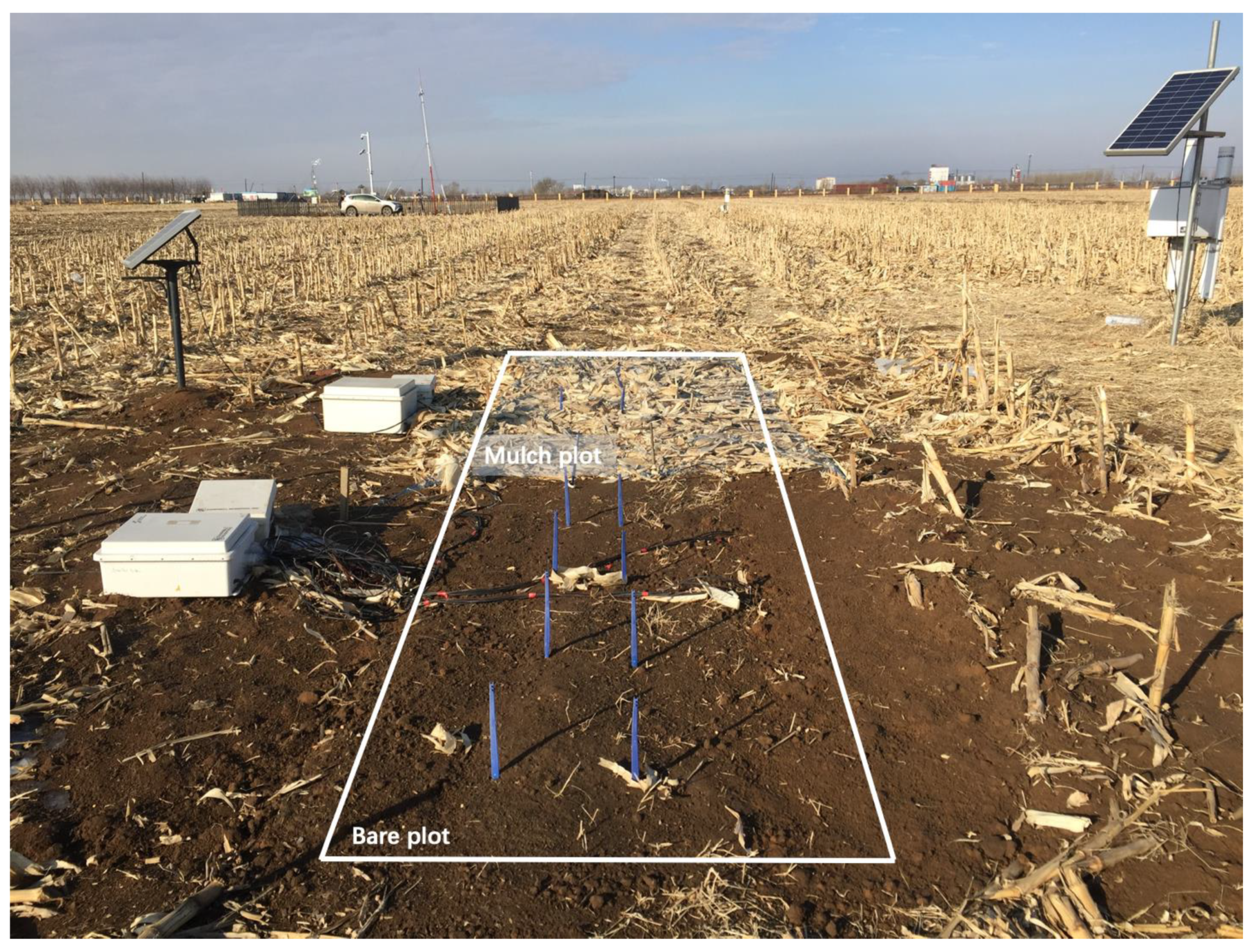

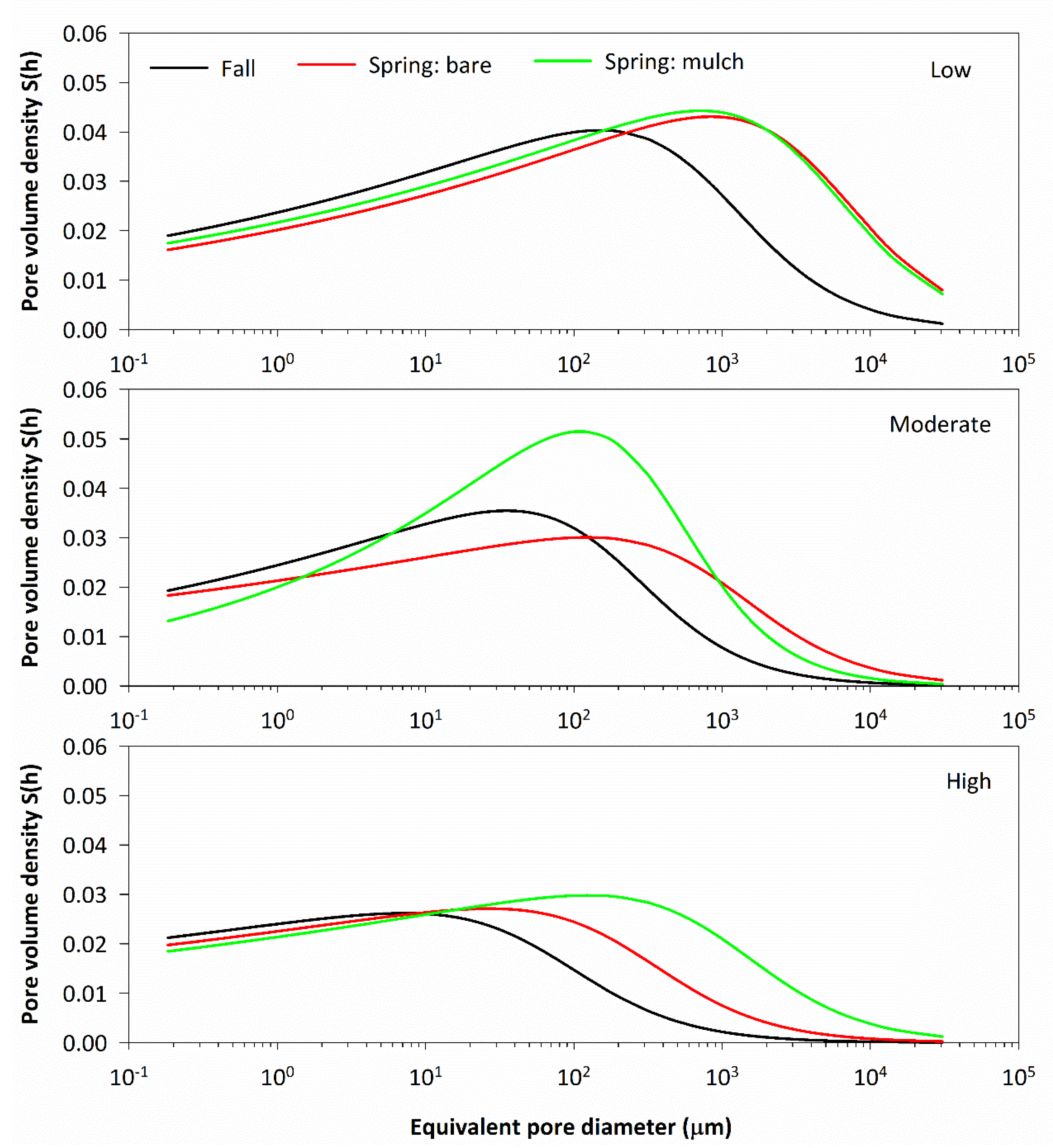
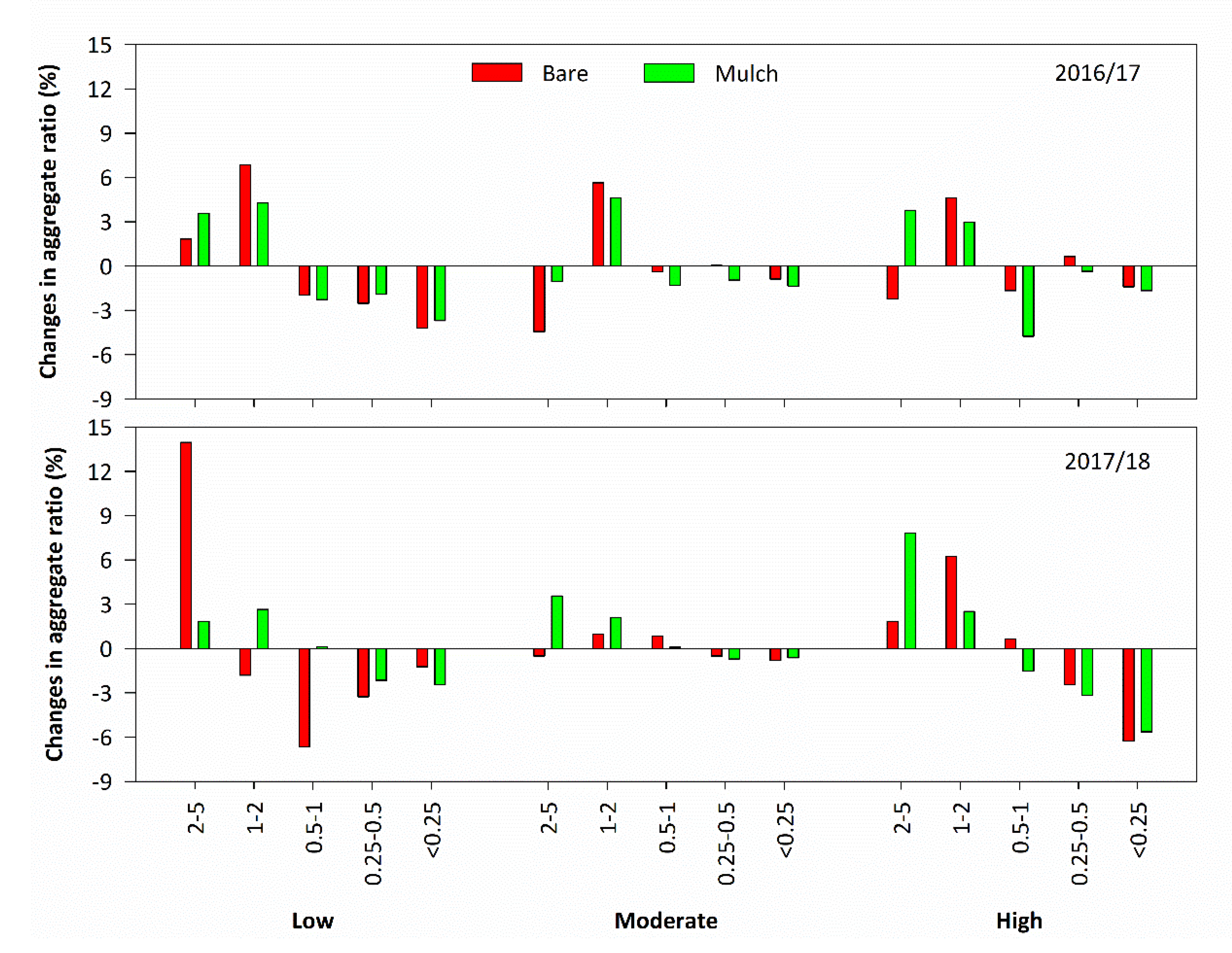
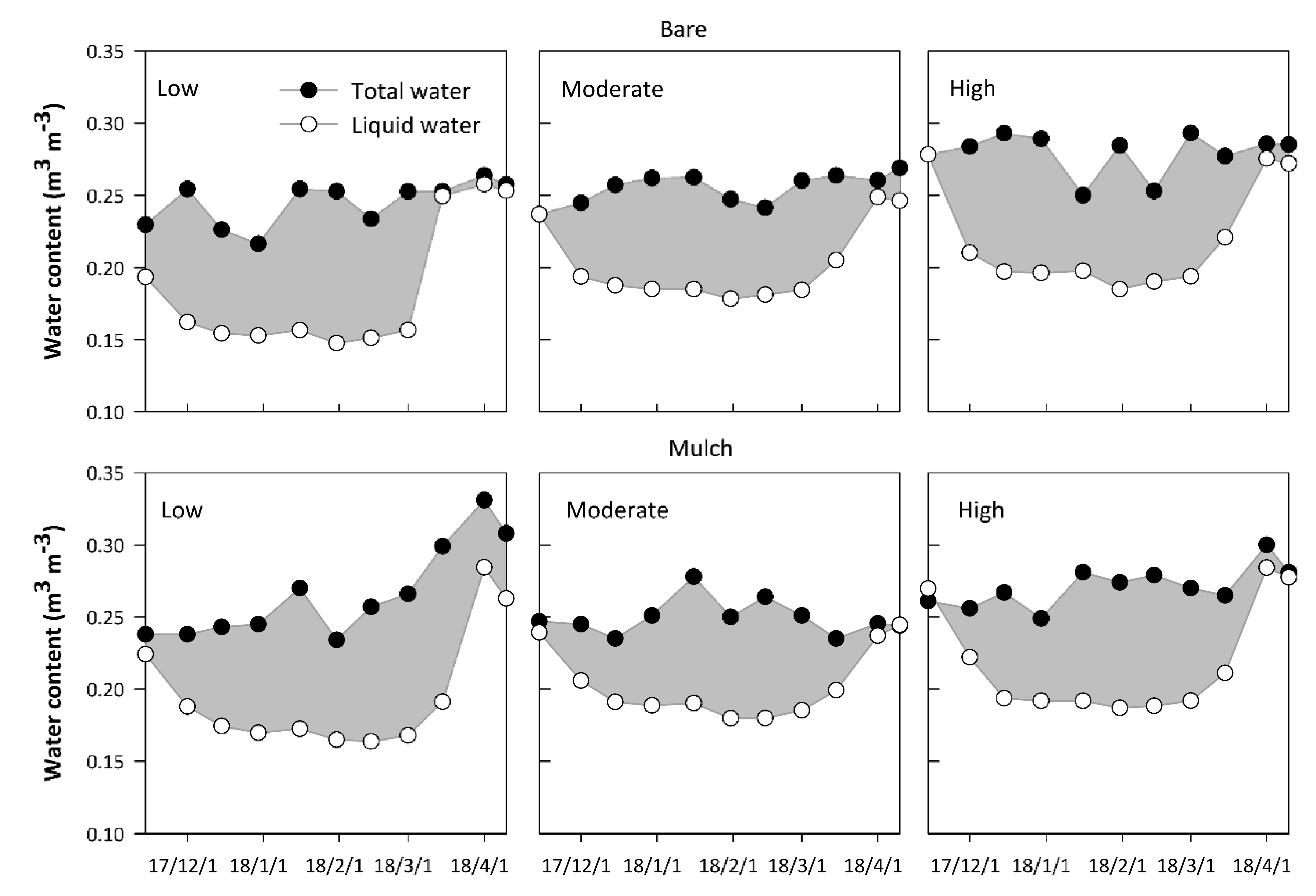
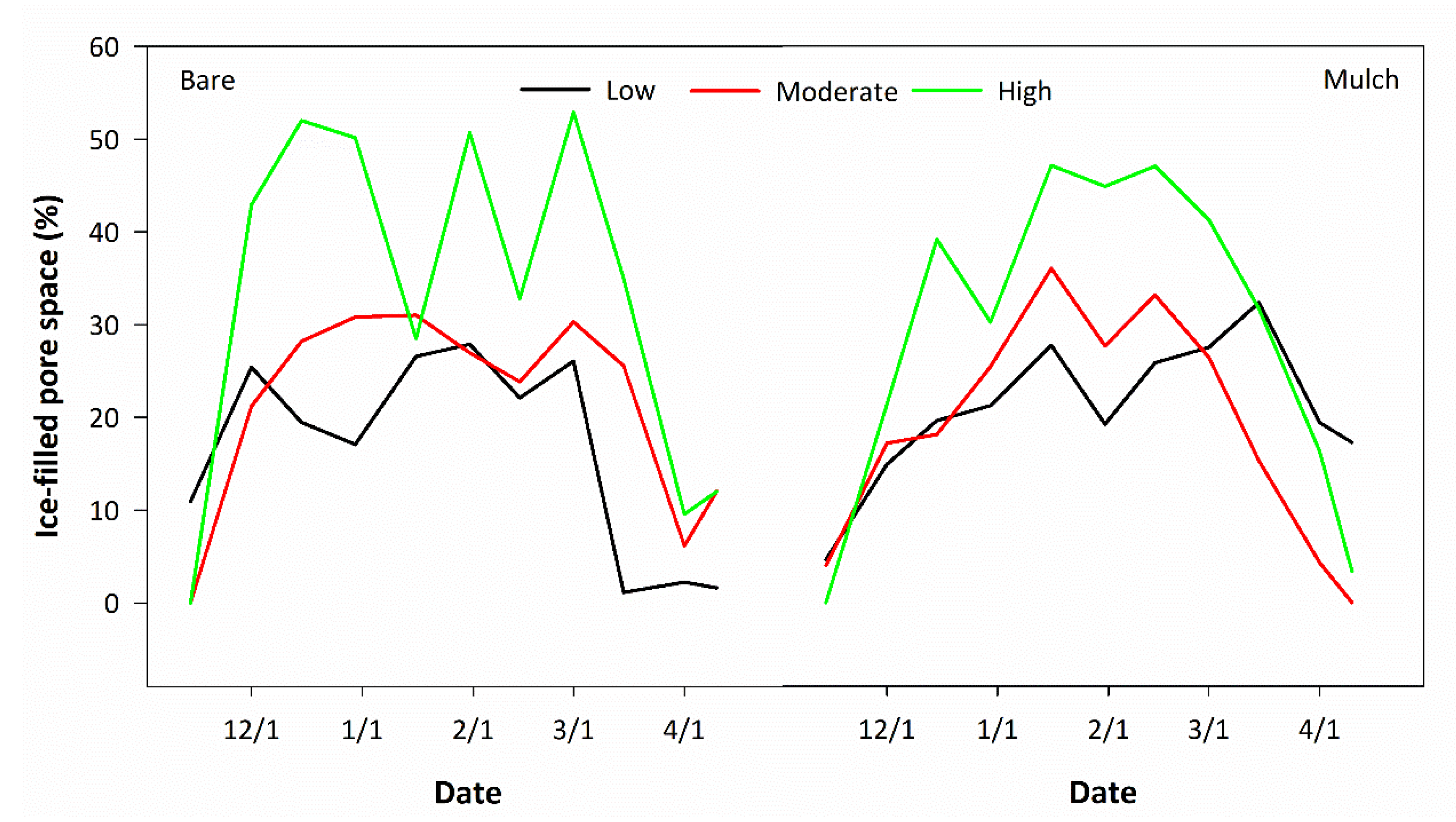
© 2020 by the authors. Licensee MDPI, Basel, Switzerland. This article is an open access article distributed under the terms and conditions of the Creative Commons Attribution (CC BY) license (http://creativecommons.org/licenses/by/4.0/).
Share and Cite
Wang, L.; Wang, H.; Tian, Z.; Lu, Y.; Gao, W.; Ren, T. Structural Changes of Compacted Soil Layers in Northeast China due to Freezing-Thawing Processes. Sustainability 2020, 12, 1587. https://doi.org/10.3390/su12041587
Wang L, Wang H, Tian Z, Lu Y, Gao W, Ren T. Structural Changes of Compacted Soil Layers in Northeast China due to Freezing-Thawing Processes. Sustainability. 2020; 12(4):1587. https://doi.org/10.3390/su12041587
Chicago/Turabian StyleWang, Li, Hengfei Wang, Zhengchao Tian, Yili Lu, Weida Gao, and Tusheng Ren. 2020. "Structural Changes of Compacted Soil Layers in Northeast China due to Freezing-Thawing Processes" Sustainability 12, no. 4: 1587. https://doi.org/10.3390/su12041587
APA StyleWang, L., Wang, H., Tian, Z., Lu, Y., Gao, W., & Ren, T. (2020). Structural Changes of Compacted Soil Layers in Northeast China due to Freezing-Thawing Processes. Sustainability, 12(4), 1587. https://doi.org/10.3390/su12041587






